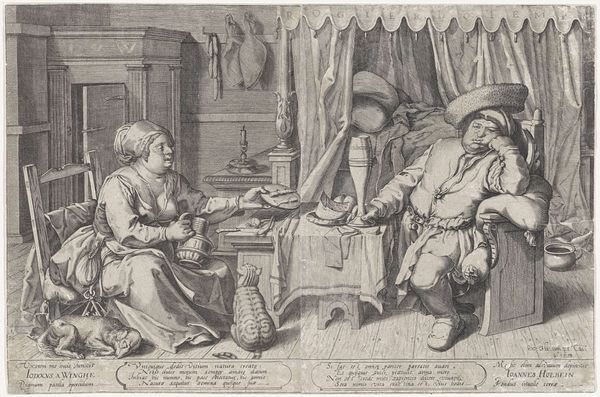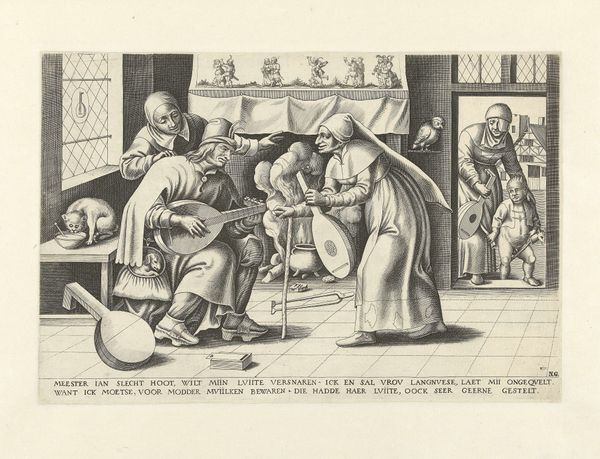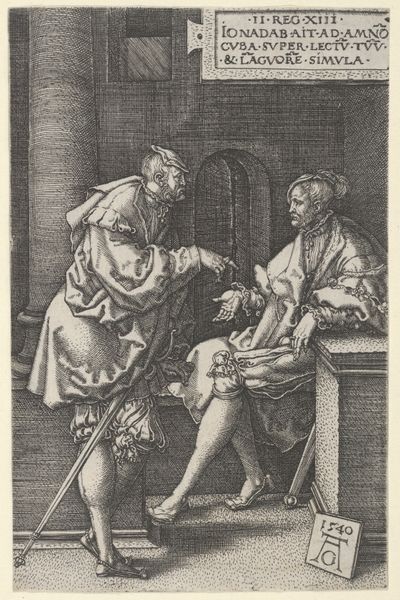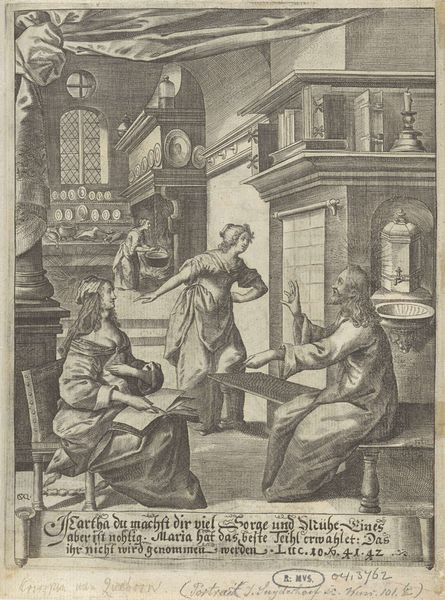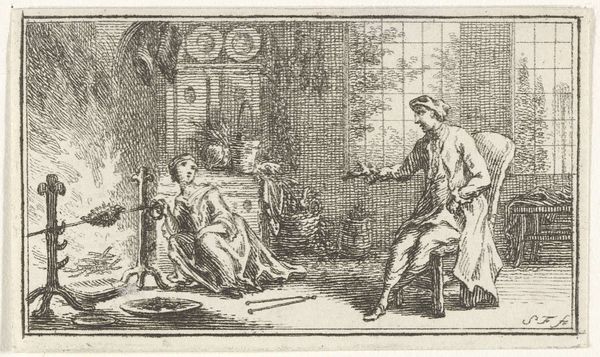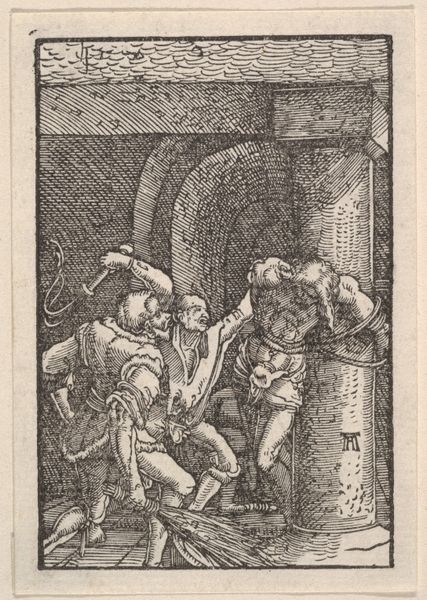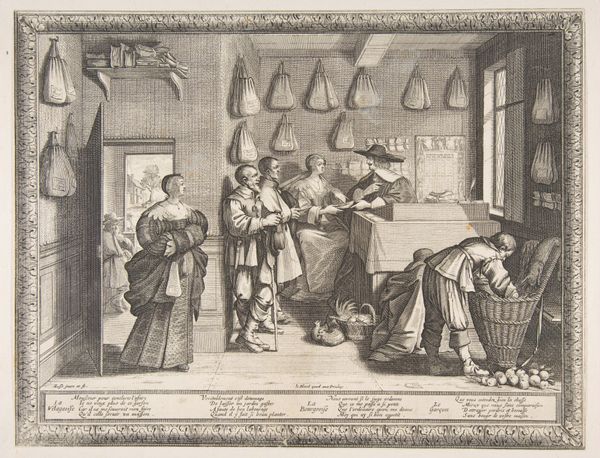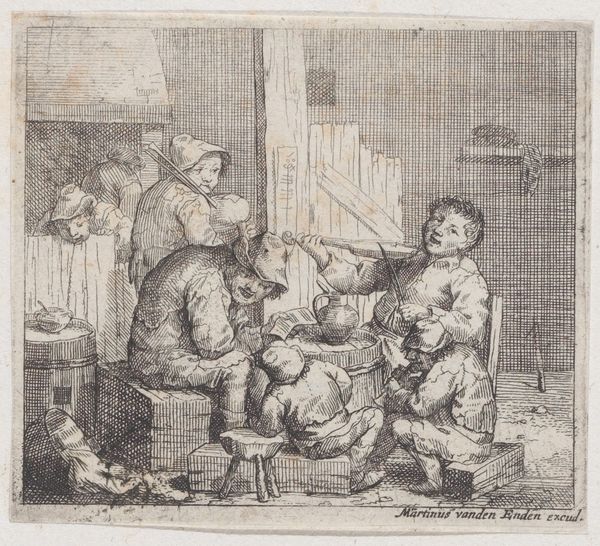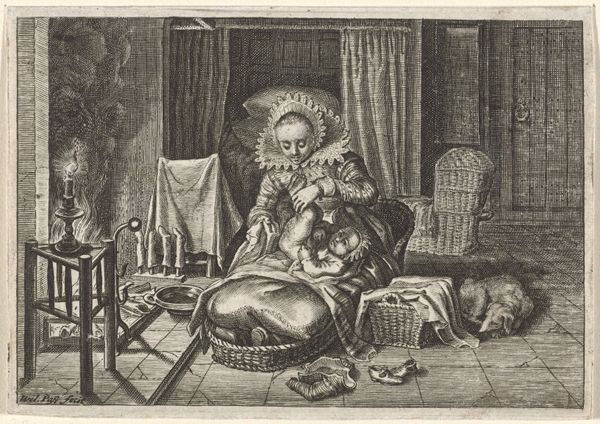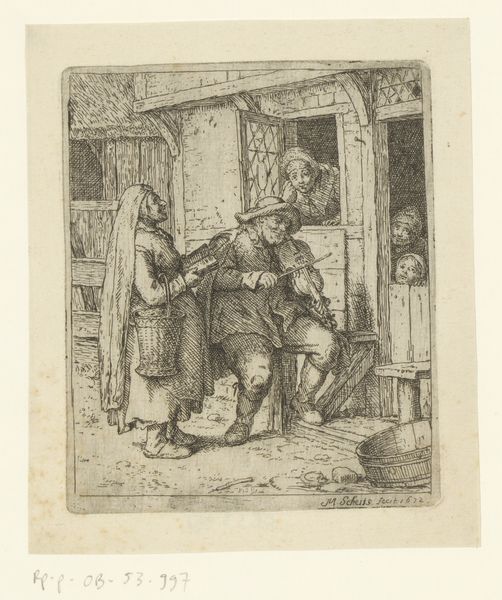
drawing, print, ink, pen, engraving
#
drawing
#
narrative-art
# print
#
pen sketch
#
ink
#
pen
#
genre-painting
#
engraving
Dimensions: height 68 mm, width 100 mm
Copyright: Rijks Museum: Open Domain
Editor: This engraving from the 19th century depicts Hugo de Groot hiding in a book chest in 1621. I’m struck by the vulnerability of the figure inside the chest, contrasting with the rather matter-of-fact expression of the woman. What does this scene tell us about the power dynamics at play? Curator: It’s fascinating to consider this image as a piece of political theatre, a visual narrative designed for public consumption. De Groot's escape, although historically situated in 1621, gained prominence in the 19th century amidst rising nationalistic sentiments. The image isn't just a portrayal of a past event, but a powerful commentary on political imprisonment and resistance. How might the act of depicting this scene in the 19th century shape its meaning for contemporary audiences? Editor: That’s interesting, I hadn't thought about the nineteenth-century reception. It almost feels like the artist is trying to elevate de Groot to the status of a national hero through this intimate and clandestine moment. Is there a specific cultural or political context that amplified the circulation and interpretation of this print? Curator: Indeed. Think about the growth of public museums and the rise of history painting as a didactic tool during this period. Images like these circulated widely, fostering a shared sense of national identity and often reinforcing existing political ideologies. Consider the placement of books within the composition - not just as tools for escape, but also as potent symbols of knowledge, and, by extension, resistance to oppressive authority. Editor: So, the seemingly simple depiction of a man hiding becomes a complex symbol for broader political struggles and national identity. Curator: Precisely. It underscores the powerful role art plays in constructing and perpetuating national narratives. Editor: That gives me a completely different perspective on the print. Thanks so much for your insight. Curator: My pleasure. It’s crucial to analyze how art intersects with the social and political landscapes of its time, isn't it?
Comments
No comments
Be the first to comment and join the conversation on the ultimate creative platform.
